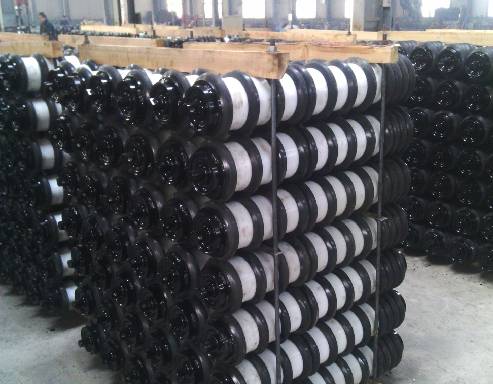 Afrikaans
Afrikaans  Albanian
Albanian  Amharic
Amharic  Arabic
Arabic  Armenian
Armenian  Azerbaijani
Azerbaijani  Basque
Basque  Belarusian
Belarusian  Bengali
Bengali  Bosnian
Bosnian  Bulgarian
Bulgarian  Catalan
Catalan  Cebuano
Cebuano  Corsican
Corsican  Croatian
Croatian  Czech
Czech  Danish
Danish  Dutch
Dutch  English
English  Esperanto
Esperanto  Estonian
Estonian  Finnish
Finnish  French
French  Frisian
Frisian  Galician
Galician  Georgian
Georgian  German
German  Greek
Greek  Gujarati
Gujarati  Haitian Creole
Haitian Creole  hausa
hausa  hawaiian
hawaiian  Hebrew
Hebrew  Hindi
Hindi  Miao
Miao  Hungarian
Hungarian  Icelandic
Icelandic  igbo
igbo  Indonesian
Indonesian  irish
irish  Italian
Italian  Japanese
Japanese  Javanese
Javanese  Kannada
Kannada  kazakh
kazakh  Khmer
Khmer  Rwandese
Rwandese  Korean
Korean  Kurdish
Kurdish  Kyrgyz
Kyrgyz  Lao
Lao  Latin
Latin  Latvian
Latvian  Lithuanian
Lithuanian  Luxembourgish
Luxembourgish  Macedonian
Macedonian  Malgashi
Malgashi  Malay
Malay  Malayalam
Malayalam  Maltese
Maltese  Maori
Maori  Marathi
Marathi  Mongolian
Mongolian  Myanmar
Myanmar  Nepali
Nepali  Norwegian
Norwegian  Norwegian
Norwegian  Occitan
Occitan  Pashto
Pashto  Persian
Persian  Polish
Polish  Portuguese
Portuguese  Punjabi
Punjabi  Romanian
Romanian  Russian
Russian  Samoan
Samoan  Scottish Gaelic
Scottish Gaelic  Serbian
Serbian  Sesotho
Sesotho  Shona
Shona  Sindhi
Sindhi  Sinhala
Sinhala  Slovak
Slovak  Slovenian
Slovenian  Somali
Somali  Spanish
Spanish  Sundanese
Sundanese  Swahili
Swahili  Swedish
Swedish  Tagalog
Tagalog  Tajik
Tajik  Tamil
Tamil  Tatar
Tatar  Telugu
Telugu  Thai
Thai  Turkish
Turkish  Turkmen
Turkmen  Ukrainian
Ukrainian  Urdu
Urdu  Uighur
Uighur  Uzbek
Uzbek  Vietnamese
Vietnamese  Welsh
Welsh  Bantu
Bantu  Yiddish
Yiddish  Yoruba
Yoruba  Zulu
Zulu types of pulleys in belt conveyor
Types of Pulleys in Belt Conveyors
Belt conveyors are a vital component in various industries, facilitating the efficient movement of materials from one location to another. Central to their operation is the pulley system, which plays a critical role in the movement and control of the conveyor belt. Understanding the types of pulleys utilized in belt conveyors is essential for optimizing performance and ensuring longevity.
The primary types of pulleys in belt conveyors include drive pulleys, idler pulleys, and tail pulleys. Each type serves a unique function in the overall system.
1. Drive Pulleys As the name suggests, drive pulleys are responsible for conveying power to the belt. They are usually located at the head of the conveyor and are connected to a motor. Drive pulleys can come in various designs, including lagged and non-lagged types. Lagging is a rubber coating applied to the pulley surface to increase friction between the belt and the pulley, which helps in preventing slippage. This is especially crucial in applications requiring high torque and load capacities.
types of pulleys in belt conveyor

2. Idler Pulleys Idler pulleys are essential for supporting the conveyor belt and maintaining its alignment and tension. They do not drive the belt but instead help guide it along its path. Idler pulleys can be found at strategic points along the conveyor, including the return side and throughout the length of the conveyor system. Different configurations, such as horizontal, inclined, or adjustable idlers, can be used based on the design and requirements of the conveyor.
3. Tail Pulleys Located at the opposite end of the drive pulley, tail pulleys are significant for ensuring the proper return of the conveyor belt to its starting position. They facilitate the tensioning of the belt, helping to maintain consistent movement. Tail pulleys are typically designed to minimize wear and ensure a smooth return of the belt after it has completed its load-carrying cycle.
4. Specialty Pulleys Aside from the main categories, there are also specialty pulleys designed for specific applications. These include take-up pulleys, which are used to adjust the tension of the belt, and snub pulleys, which help change the direction of the belt. Additionally, pulleys can be customized in terms of material, size, and coating to maximize efficiency and performance based on the application needs.
Understanding the various types of pulleys in belt conveyors is essential not only for the design and selection of conveyor systems but also for maintenance purposes. By selecting the appropriate pulleys and maintaining them effectively, industries can enhance their operational efficiency, reduce downtime, and extend the lifespan of their conveyor systems. Overall, the right pulley configuration can lead to significant improvements in productivity and cost-effectiveness in material handling processes.
-
Revolutionizing Conveyor Reliability with Advanced Rubber Lagging PulleysNewsJul.22,2025
-
Powering Precision and Durability with Expert Manufacturers of Conveyor ComponentsNewsJul.22,2025
-
Optimizing Conveyor Systems with Advanced Conveyor AccessoriesNewsJul.22,2025
-
Maximize Conveyor Efficiency with Quality Conveyor Idler PulleysNewsJul.22,2025
-
Future-Proof Your Conveyor System with High-Performance Polyurethane RollerNewsJul.22,2025
-
Driving Efficiency Forward with Quality Idlers and RollersNewsJul.22,2025





























